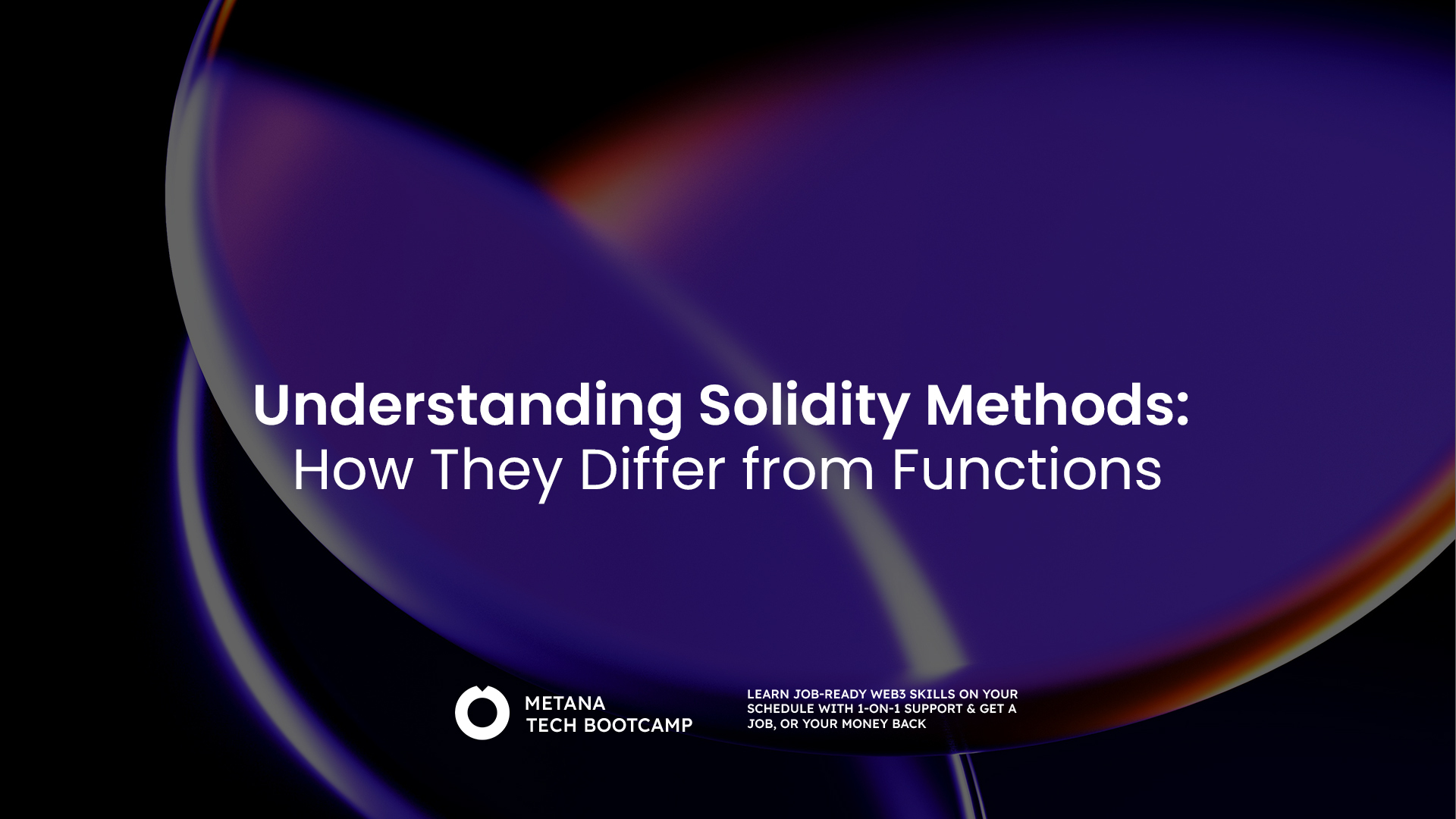You probably already know about Solidity, right? It’s a programming language that helps us create smart contracts on the Ethereum network. It’s quite similar to JavaScript, and we use “functions” and “methods” a lot when writing in Solidity.
Of course, you might already know a lot about this, but sometimes, it can be a bit tricky to tell what makes functions and methods different from each other.
So, why don’t we dive a bit deeper into what Solidity methods are all about? And, if you need to, you can always brush up on your knowledge about functions with our earlier article here. Let’s get started!
Understanding Solidity Functions
A “function” in Solidity is like a little robot. It’s given a job to do, it does that job, and then it gives you the results. This little robot can work anywhere in the program – it doesn’t have to be tied to any specific part.
For example, let’s say we have a function that adds two numbers together. It looks like this:
function add(uint a, uint b) public pure returns (uint) {
return a + b;
}This add function takes two numbers (we call these “inputs”), adds them together, and gives us the total (this is the “output”).

What about Solidity Methods?
On the other hand, a “method” in Solidity still does a job like a function, but it’s tied to a specific part of the program. It’s like if our little robot could only work in one room of a house. These methods can interact with other parts of their specific room (in programming, we call this a “contract”).
For example, look at this:
contract SimpleContract {
uint public data;
function setData(uint x) public {
data = x;
}
}Here, setData is a method. It’s tied to the contract named SimpleContract, and it can interact with this contract’s data.
So, What’s the Difference?
The big difference between functions and methods in Solidity is where they can work:
- Instance Association (Place of Work): Methods are tied to a specific part of the program (a contract). But, functions can work anywhere – they don’t have to be tied to a specific contract.
- State Interaction: Methods can interact with their specific contracts, but functions can’t change parts of a contract.
- Visibility: Methods can be set to be seen by everyone, or only by certain parts of the program. Functions are usually set to be seen by everyone.
So, while functions and methods might seem similar, they play different roles in Solidity. Knowing the difference can help you understand how to use this programming language better!
In Conclusion
Solidity, the language of Ethereum smart contracts, uses both functions and methods to make things work. Functions are like handy little tools that can work anywhere in the program. On the other hand, methods are tightly tied to specific parts of the program, known as contracts, where they can interact and change things around.
The main differences between functions and methods boil down to where they can work, what they can interact with, and who can see them. Understanding these differences is a big step towards getting better at using Solidity. It’s like knowing how to use every single tool in a toolbox – the more you know, the better you can build!

1. What is a method in Solidity?
- A method in Solidity is a function defined within a contract and associated with a specific instance of that contract. It can interact with the contract’s state variables.
2. How is a method different from Solidity functions?
- The major difference is that methods are associated with a specific contract instance and can interact with its state variables, while functions are not tied to a specific contract instance.
3. How do I define a method in Solidity?
- Methods are defined within a contract. For example:
contract SimpleContract {
uint public data;
function setData(uint x) public {
data = x;
}
}The setData function is a method of the SimpleContract contract.
4. Can methods in Solidity return values?
- Yes, methods in Solidity can return a value using the returns keyword, similar to functions.
5. Can a method in Solidity modify the state of a contract?
- Yes, methods in Solidity can read and modify the state of a contract as they are tied to a specific contract instance.
6. What are visibility specifiers in Solidity methods?
- Visibility specifiers (public, external, internal, private) define where your method can be accessed from.
7. What does the public keyword mean in a Solidity method?
- public is a visibility specifier. A public method can be called from any contract.
8. How can I call a method in Solidity?
- A method can be called within a contract using this.methodName(), or from another contract by using contractInstance.methodName().
9. Can Solidity methods have parameters?
- Yes, similar to Solidity functions, methods can take parameters.
10. What does the external keyword mean in a Solidity method?
- external is a visibility specifier. An external method can only be called from other contracts and cannot be called internally, except with this.methodName().





